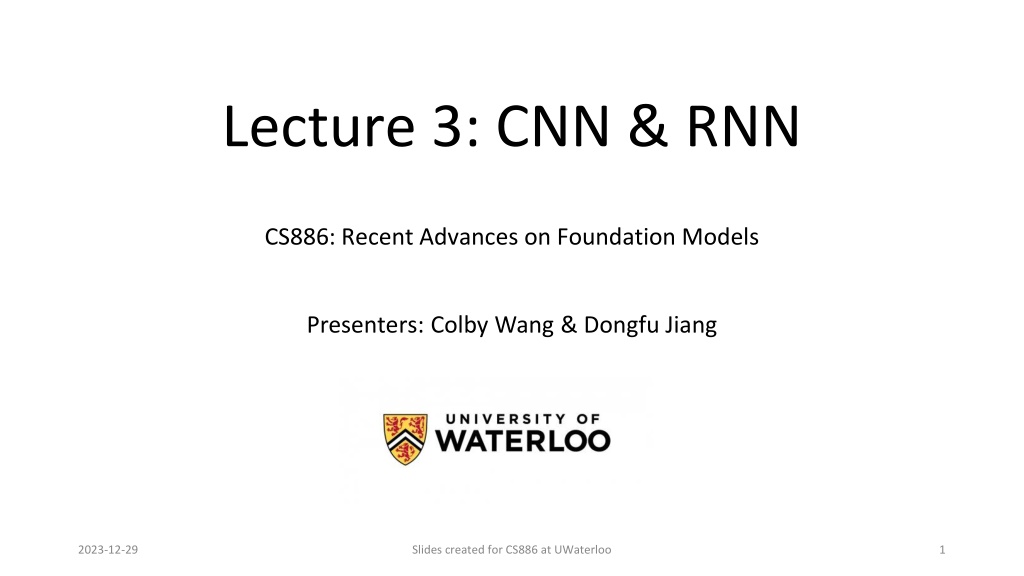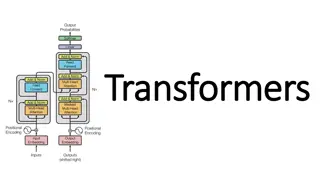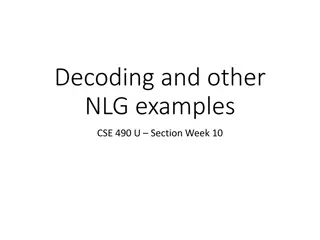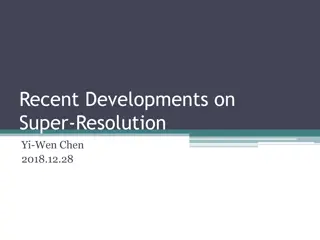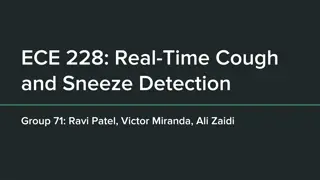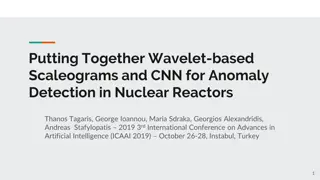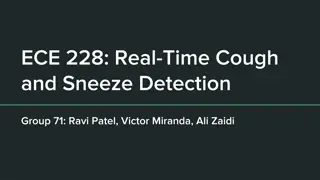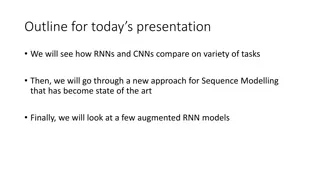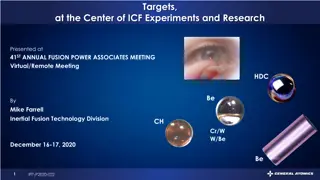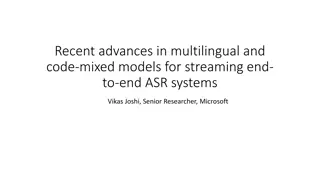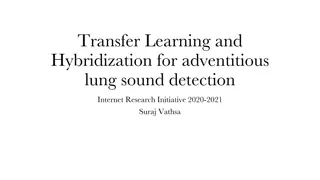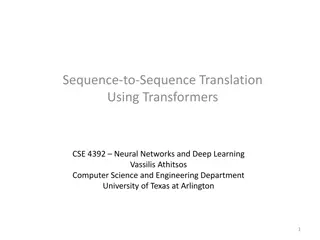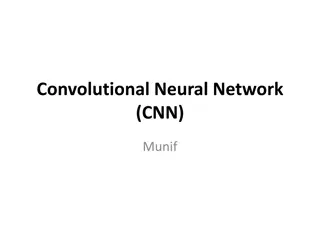Recent Advances in RNN and CNN Models: CS886 Lecture Highlights
Explore the fundamentals of recurrent neural networks (RNNs) and convolutional neural networks (CNNs) in the context of downstream applications. Delve into LSTM, GRU, and RNN variants, alongside CNN architectures like ConvNext, ResNet, and more. Understand the mathematical formulations of RNNs and challenges such as gradient vanishing and long-range memory issues. Discover solutions like Long Short-Term Memory (LSTM) to address RNN limitations.
Download Presentation

Please find below an Image/Link to download the presentation.
The content on the website is provided AS IS for your information and personal use only. It may not be sold, licensed, or shared on other websites without obtaining consent from the author. Download presentation by click this link. If you encounter any issues during the download, it is possible that the publisher has removed the file from their server.
E N D
Presentation Transcript
Lecture 3: CNN & RNN CS886: Recent Advances on Foundation Models Presenters: Colby Wang & Dongfu Jiang 2023-12-29 Slides created for CS886 at UWaterloo 1
What we will cover Basics of recurrent neural networks. LSTM, GRU and other variants of RNN. How the RNNs have been used in different downstream applications. Basics of convolutional neural networks. ConvNext, ResNet, ResNext, DenseNet, UNet, MobileNet, etc. How does CNNs have been used in different downstream applications. 2023-12-29 Slides created for CS886 at UWaterloo 2
Basics of Recurrent Neural Network First let us look at a simple diagram of Recurrent Neural Network (RNN): ht ht+1 ht-1 h f f f f Unfold x xt+1 xt-1 xt 4
Mathematical Formulations for RNN Now let us look at the mathematical formulations for RNN: ht= tanh(Whhht-1+ Wxhxt+ b), where ht-1represents the information at the previous step in the sequence. It's a vector that stores the learned information up to that point. xtrepresents the new input data at current time step ht represents the next hidden state calculated based on a weighted sum of ht-1and xt. 5
Problems of Vanilla RNNs Gradient Vanishing and Explosion: These issues arise due to the multiplication of gradients through the many layers of an RNN during backpropagation. Vanishing gradients make it hard for the model to learn, as updates to the weights become insignificantly small. Exploding gradients can cause the weights to oscillate or diverge wildly. 6
Problems of RNN Contd Long Range Memory: RNNs ideally should remember information from early in the sequence to use much later, which is crucial for tasks like text translation or sentiment analysis. However, with vanishing gradients, the network tends to forget this early information. Prediction Drift: Over long sequences, small errors can accumulate in each timestep of prediction, causing the RNN to drift off course. This drift makes it challenging to maintain accurate predictions in tasks like time-series forecasting or text generation as the sequence progresses (since current input is based on previous input) 7
Long Short-Term Memory (LSTM) Special gated structure to control memorization and forgetting in RNNs Mitigate gradient vanishing Facilitate long term memory A simple diagram looks like the following: These gates are essentially different neural networks with sigmoid activation functions (outputting values between 0 and 1). They are trained to selectively allow information to pass through, which helps in retaining the important information over longer periods and hence, mitigating the vanishing gradient problem 9
LSTM Diagram Out1 Output Gate x h0 h1 x x Forget Gate Input Gate x1 10
Mathematical Formulations Hidden state htcalled cell state ct Output ytcalled hidden state ht Update Equations: Input Gate it= (W(ii)xt+W(hi)ht-1) Forget Gate: ft= (W(if)xt+W(hf)ht-1) Output Gate: ot= (W(io)xt+W(ho)ht-1) Process Input: c_tilda = tanh(W(ic_tilda)xt+W(hc_tilda)ht-1) Cell Update: ct= ft* ct-1+ it* c_tilda Output: yt= ht= ot* tanh(ct) 12
Roles of Different Gates in LSTM Input Gate (it): Controls the extent to which a new value flows into the cell state. Forget Gate (ft): Determines the information to be discarded from the cell state. Output Gate (ot): Regulates the amount of information to output from the cell state. Process Input (c ): Creates a vector of new candidate values that could be added to the cell state. 13
Roles of Different Gates in LSTM Contd Cell Update (ct): Updates the cell state by combining the old state (influenced by the forget gate) and the new candidate values (modulated by the input gate). (memory) Output (yt = ht): Determines the next hidden state based on the cell state and output gate. The network can selectively remember or forget information, aiding in preserving long-term dependencies. 14
Variants II of RNN: Highway Networks Inspired by LSTM 15
Highway Networks Designed to mitigate issues associated with training deep neural networks such as gradient vanishing Accomplished through the use of a learned gating mechanism for regulating information flow which is inspired by Long Short Term Memory recurrent neural networks Information either flows without attenuation, or flows using neural network weights 16
Mathematical Formulations for Highway Networks y = H(x, WH) T(x, Wx) + x C(x, WC) Here T is called a transform gate, and C is called a carry gate. For simplicity we can set C = 1 - T. Then: y = H(x, WH) T(x, Wx) + x (1 - T(x, Wx)) Here T is defined as T(x) = (WTTx+bT), where (x) = 1 / (1 - e-x) 17
Advantages of Highway Networks A highway layer can smoothly vary its behavior between that of a plain layer and that of a layer which simply passes its inputs through. A simple initialization scheme which is independent of the nature of H: bTcan be initialized with a negative value (e.g. -1, -3 etc.) such that the network is initially biased towards carry behavior. Note: A highway network consists of multiple blocks such that the i th block computes a block state Hi(x) and transform gate output Ti(x). Finally, it produces the block output yi= Hi(x) Ti(x) + xi (1 - Ti(x)), which is connected to the next layer. 18
Experiments Compared the optimization of deep plain networks and highway networks using the MNIST dataset. Networks with varying depths (10, 20, 50, and 100 layers) was trained to observe optimization performance. 19
Experiments Contd Highway networks displayed consistent performance across all depths, contrary to plain networks whose performance degraded with increased depth. Notably, a 100-layer highway network significantly outperformed a 10-layer version. The study also included a preliminary test on a 900-layer highway network on CIFAR-100, which showed promising results without optimization difficulties. 20
Results 21
More experiments The study compared highway networks to Fitnets on CIFAR-10 for evaluating generalization in supervised learning. Fitnets required complex training procedures (using a teacher network) for networks deeper than 5 layers with a limited number of parameters and operations. Highway networks were easily trained with parameters and operations similar to Fitnets, using straightforward backpropagation. This approach to training highway networks proved effective even for deeper and thinner network architectures. 22
Results 23
Variant III: Gated Recurrent Unit for Simplifying LSTM 24
Gated Recurrent Unit (GRU) No cell state Two gates (instead of three) Fewer weights Update Equations (update = input + forget): Reset Gate rt= (W(ir)xt+W(hr)ht-1) Update Gate: zt= (W(iz)xt+W(hz)ht-1) (how much input to pass) Process Input: h_tildat= tanh(W(ih_tilda)xt+rt* W(hh_tilda)ht-1) Hidden State Update: (1 - zt) * ht-1+ zt* h_tildat Output: yt= ht 25
Roles of Gates in GRU Reset Gate (rt): Determines how much past information to forget, allowing the model to drop irrelevant information from the past. Update Gate (zt): Balances between the new input and the past memory, controlling how much of the past state to retain versus the new input. 26
Roles of GRU Contd Process Input (h t): Generates candidate values for the new hidden state, influenced by the reset gate. Hidden State Update: Combines the old hidden state (modulated by 1 zt) and the new candidate values (weighted by zt) to form the new hidden state. Output (yt = ht): The updated hidden state serves as the output, representing the current memory of the network. 27
Compare LSTM with GRU Complexity: LSTMs are more complex with three gates (input, forget, output), while GRUs have two gates (reset, update). Memory Usage: LSTMs generally require more memory due to their complexity. Training Time: GRUs, being simpler, often train faster than LSTMs. 28
Compare GRU with LSTM Contd Performance: GRUs might perform better on smaller datasets, while LSTMs often excel on datasets with longer sequences. Parameters: LSTMs have more parameters, making them more flexible but also more prone to overfitting on smaller datasets. State Update Mechanism: LSTMs have separate cell and hidden states, whereas GRUs have a single hidden state. Choice of Model: The choice between GRU and LSTM depends on the specific application and dataset characteristics. 29
Advantages of GRU Faster Training: Due to fewer parameters, GRUs can be faster train, making them more efficient for smaller datasets or when computational resources are limited. Efficient on Smaller Datasets: GRUs may perform better than LSTMs when the amount of data is not large, as they can capture dependencies without the need for extensive data. Flexibility in Memory Management: GRUs are capable of adapting to the use of short-term memory through their update and reset gates, potentially capturing information across various time steps efficiently. 30
Experiments: Sequence Modeling maximizing the log-likelihood of a model given a set of training sequences (theta is a set of model parameters) Evaluate these units in the tasks of polyphonic music modeling and speech signal modeling. 32
Results 33
Simple Analysis RNN with gating units outperform the one without gating unit, on the task of speech recognition. Over the music dataset the performances are similar 35
Downstream Applications of RNN: Machine Translation 36
Attention Mechanism for alignment in machine translation, image captioning, etc. Attention in machine translation: align each output word with relevant input words by computing a softmax of the inputs context vector ci = jaijhj aijis called an alignment weight between input encoding and hjand output encoding si. This is computed as follows: aij= exp(alignment(si-1, hj)) / j exp(alignment(si-1, hj ) [softmax] 37
Attention Diagram y1 y2 y3 Decoder s3 s1 s2 + a31 a3t a33 a32 h1 h2 h3 ht Encoder x1 x2 x3 xt 38
Machine Translation with Bidirectional RNNs, LSTM units and attention Bahdanau, Cho, Bengio (ICLR-2015) Bleu: BiLingual Evaluation Understudy: Percentage of translated words that appear in ground truth 39
Local Attention Previously we are discussing a form of global attention, where all source tokens are attended to. Now we look at 2 forms of local attention: 1) Monotonic Alignment (Local M): assume source and target sequences are monotonically aligned, and the align vector is computed as discussed on a previous slide 2) Predictive Alignment (Local P): predicts an aligned position as follows: pt=S*sigmoid(vpTtanh(Wpht)) Wpand vpare learned model parameters, and S is the source sentence length We will use the aligned position to form a window length 2*D (we are only attending to this window) [pt-D, pt+D] 41
More Results Translating between English and German: 42
Input feeding means attentional vectors htare concatenated with inputs at the next time steps. We limit our vocabularies to be the top 50K most frequent words for both languages. Words not in these shortlisted vocabularies are converted into a universal token <unk>. 44
More Alignment Illustration (Global, Local M & Local P, Gold Alignment) 45
Basics of CNN CNN operation 0 0 7 7 8 0 4 2 5 1 1 6 1 3 1 1 4 5 9 0 1 2 7 8 5 46 1 2 1 0 2 1 2 1 1 7 7 8 2 5 1 1 3 1 46 Pooling operation 0 0 7 7 8 0 4 2 5 1 1 6 1 3 1 1 4 5 9 0 1 2 7 8 5 8 7 7 8 2 5 1 1 3 1 8 MaxPooling 2024-01-16 Slides created for CS886 at UWaterloo 47
Basics of CNN CNN operation 0 0 7 7 8 0 4 2 5 1 1 6 1 3 1 1 4 5 9 0 1 2 7 8 5 46 1 2 1 0 2 1 2 1 1 7 7 8 2 5 1 1 3 1 46 Pooling operation 0 0 7 7 8 0 4 2 5 1 1 6 1 3 1 1 4 5 9 0 1 2 7 8 5 8 7 7 8 2 5 1 1 3 1 8 MaxPooling 2024-01-16 Slides created for CS886 at UWaterloo 48
LeNet-5 Sigmoid activation after each convolution operation Using average pooling 2024-01-16 Slides created for CS886 at UWaterloo 49
ImageNet ImageNet is a dataset with over 15 million labeled high-resolution images belonging to roughly 22,000 categories. 2024-01-16 Slides created for CS886 at UWaterloo 50
